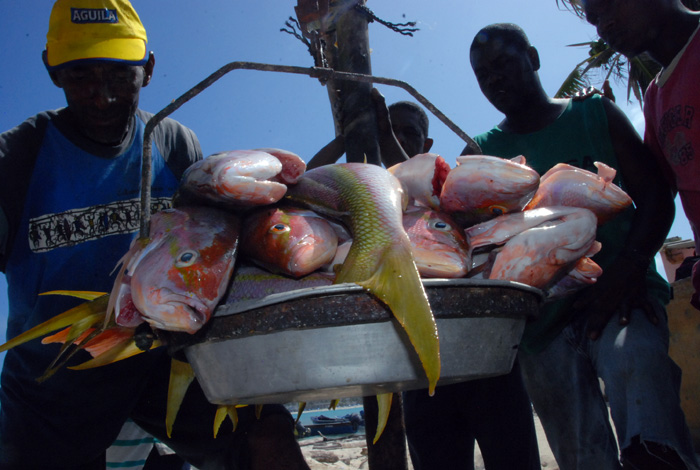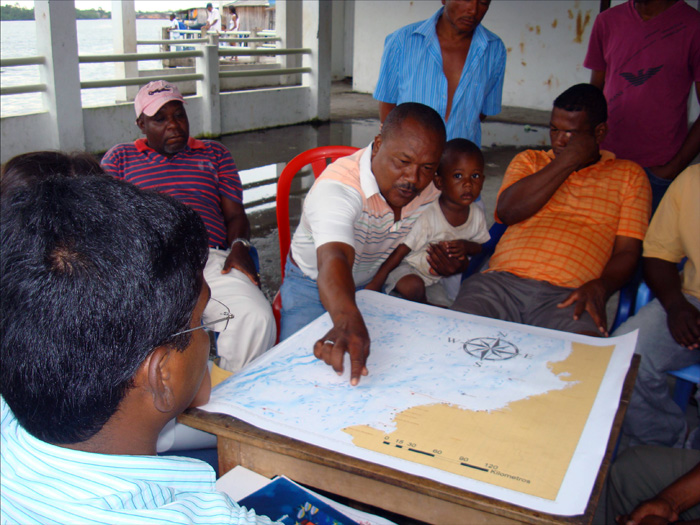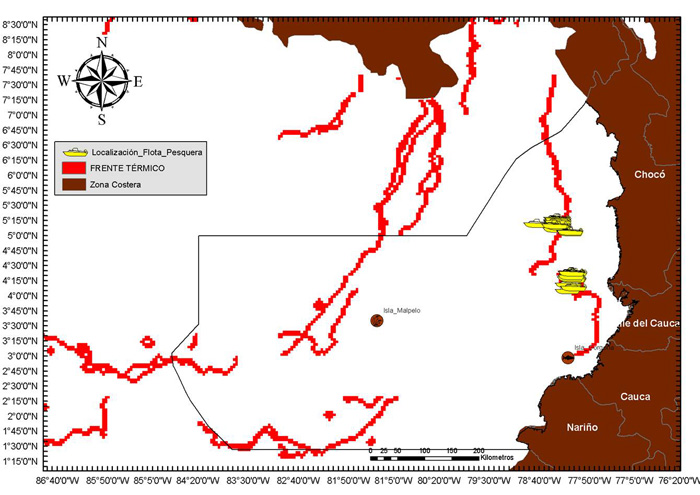Artisanal and industrial fishing in Buenaventura port, the main producer of this sector in Colombia, unloaded 36,685,79 tons of this product in 2009, indicating a decrease of 41,70 % in comparison to 2008, which was 62,922,28.
In the Caribbean, the situation is similar if it is considered that during 2009 the amount of unloaded fish in the information points of CCI was 8,321 tons, while last year"s was 9,601. This situation proves a critical decrease in the production in the entire country.
In this context, more that 3,000 fishermen of the Pacific that live from what their fishnets provide to feed their families are affected.
"In less than a year, the float of 720 ships of the region has been reduced to 80 fishing boats. This has produced high unemployment rates, and the main problem is that the government does not support the sector," asserted Manuel Bedoya, president of the National Association of Artisanal Fishermen of Buenaventura (Anpar, for its acronym in Spanish).
Thus, uploads of industrial fish were of 31,880,12 tons, equivalent to 86,90% of the total production in the Pacific. The decrease was 44,01% compared to that of 2009, a situation that, according to the International Colombian Corporation (CCI), might be a consequence of the cease of shoal fishing (small banks of fish) in August, 2009; the 33,5% decrease of tuna unloads; and the banning of the shrimp of surface water in September of the same year.
Technology reduces costs and efforts
Aiming at improving the conditions of fishermen from this coast region of Colombia, researchers from the Hydrobiological Resources Group of Universidad Nacional de Colombia in Palmira identified and evaluated productive areas to fish pelagic fish (an organism that lives in water columns), by means of technologies of satellite oceanography that reduce the time spent in finding the fish.
This project has been carried out for two years and a half, supported by the Ministry of Agriculture and Rural Development, the Research Vice Presidency of Universidad Nacional de Colombia in Bogotá, and the Institute for Marine and Costal Research (Invemar, for its acronym in Spanish), among other institutions in the country.
"Through digital oceanography, we collected satellite images of the chlorophyll and surface temperature of the sea, and we identified patterns such as temperature fronts, that is to say, places that can be very productive, since they have a big amount of organisms that attract big predators such as golden tuna, etc.," asserted professor Angela Inés Guzmán, director of the research group of Universidad Nacional de Colombia.
For validating these productive areas, the study used historical information regarding the fish abundance, given by industrial fishermen of the region, who could not only save time, but also save oil, since their costs exceed COP 35 million during a fish trip, which lasts around one month.
"In the Pacific Region, this is the first time that we talk about a technology used to find fishing areas, which significantly reduces the efforts that have limited the sector for many years," affirms Wilberto Angulo, staff member of Invemar.
During the project, on the fishing boat Doña Rosario, production areas were also validated in November, 2009.
Researchers identified different fishing zones that had not been identified before by the industrial fisherman of the region, and they also performed an evaluation to determine the time the temperature fronts remain in the ocean, since they can quickly disappear or last a few weeks.
"During the evaluation of the project in Tumaco, we obtain approximately 40% more fish than the amount we normally find in other places in the Pacific, this indicates that the temperature fronts provide accurate results," asserted Mr. Guillermo, one of the artisanal fishermen that participated in the expedition.
However, Professor Jhon Selvaraj, director of the study, mentioned that "it is important to consider that the productive places can vary depending on the weather conditions and variables such as salinity and sea temperature."
The satellite information of this project will be published in a web page, in which fishermen will be able to find detailed maps with the information of the temperature fronts. "The idea is that they can use these maps in their fishing, reducing costs and efforts," mentioned the professor.
This project was awarded a prize for the best work in the poster of the international event Ocean From Space 2010, organized by the European Space Agency, in Italy. The outcomes socialization for the fishermen will take place next year, aiming at helping the fishing sector, which during 2010 have moved more than 85 million dollars in exports, and which is expected to help artisanal and industrial fishermen, not only in the Colombian pacific, but also in the entire country.
 Correo Electrónico
Correo Electrónico
 DNINFOA - SIA
DNINFOA - SIA
 Bibliotecas
Bibliotecas
 Convocatorias
Convocatorias
 Identidad UNAL
Identidad UNAL





